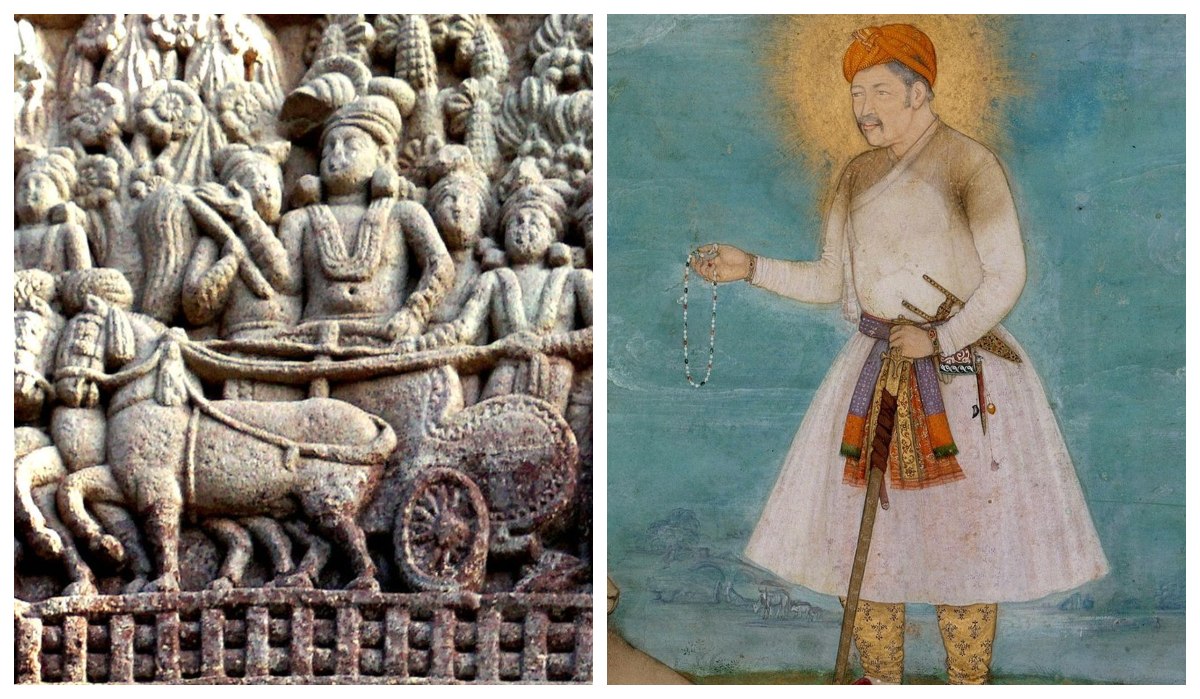Emperor Ashoka and Emperor Akbar are to my mind the two most outstanding figures in Indian history. To explain this we must first understand what is India.
1) India is broadly a country of immigrants, like the United States of America. While the USA is a country of new immigrants, mainly Europeans, who arrived over the last 500 years, India is a country of old immigrants who had started arriving thousands of years ago.
Why have people been coming into India? In fact, very few people left India, except on two occasions, first in the 19th century when the British took poor peasants to Fiji, Mauritius, the West Indies, etc., as plantation labour and second, the diaspora in the last 50 or more years of engineers, scientists, doctors, etc. Apart from this, nobody left India, everybody came into India. Why?
The reason is obvious. People migrate from uncomfortable areas to comfortable areas, obviously, because everybody wants comfort. Before the Industrial Revolution which started in western Europe in the 18th century and then spread all over the world, there were agricultural societies everywhere. Agriculture requires level land, fertile soil, and plenty of water for irrigation. All this was in abundance in the Indian subcontinent from Rawalpindi to Bangladesh and to the deep south up to Kanyakumari. Why will anybody migrate from India to, say, Afghanistan which is cold, rocky and uncomfortable, covered with snow for four to five months in a year.
For agricultural society, India was really paradise, hence everybody kept rolling into India, mainly from the northwest and to a much less extent from the northeast.
2) Who were the original inhabitants of India? At one time it was believed that the Dravidians were the original inhabitants, but now that theory has been disproved. Now, it is believed that even the Dravidians came from outside. There are several proofs of that, one of which is that there is a Dravidian language called Brahui which is spoken in western Pakistan even today by about three million people.
The original inhabitants of India, as it is believed now, were the pre-Dravidian tribals, who are called adivasis or Scheduled Tribes in India—the Bhils, the Santhals, the Gonds, the Todas—the speakers of the Austric, pre-Dravidian languages such as Munda, Gondvi. They are hardly seven or eight per cent of the Indian population today. They were pushed into the forests by the immigrants and treated very badly. Except for them, all of us are descendants of immigrants who came mainly from the northwest of India.
3) Because India is a country of immigrants there is tremendous diversity in India, so many religions, castes, languages, ethnic groups. Indians are tall, short, fair, dark, brown, with Mongoloid features, Caucasian features, and Negroid features. There are differences in food habits, dress, festivals.
In contrast, in China there is broad (though not absolute) homogeneity. All Chinese have Mongoloid features, they have one common written script called Mandarin Chinese (although spoken dialects are different), and 95 of them are from one ethnic group called Han Chinese. In India, there is tremendous diversity, because whichever group of immigrants came into India brought in their own culture, their religion, their language.
4) Because of the tremendous diversity, the only policy which can work and hold our country together is secularism and giving equal respect to all communities.
Emperors Ashoka and Akbar intuitively understood this.
Ashoka who ruled from BC 268 to 232, said in his 12th Major Rock Edict:
“All religions should be honoured. Whoever praises his own religion due to excessive devotion and condemns others, with the thought ‘Let me glorify my own religion' only, harms his own religion. Therefore contact (between religions) is good. One should listen to and respect the doctrines professed by others.”
This is known as the Girnar Rock Edict of Junagadh, the full text of which is given below
The edict is inscribed on a rock on the Sudarshan Lake in Girnar, Gujarat. The probable date of the edict is BC 260:
“Thus saith His Sacred and Gracious Majesty the King: The King honours all religious sects. His Sacred Majesty does not value gifts and honours as he values the growth of the essential elements of all religious sects. But the root of it is restraint of speech, that is, there should not be honour only of one's own religion and condemnation of other religions. On the other hand, other religions should be honoured, too. By doing this, one helps his own religion to grow, and benefits the religion of others, too. By doing otherwise, one harms his own religion and injures the other religions, too. For whoever honours only his own religion and condemns other religions injures more gravely his own religion. Hence concord alone is commendable, and all should listen, and be willing to listen, to the beliefs professed by others. This is the desire of his Sacred Majesty."
Similar was the policy of suleh-e-kul (giving equal respect to all religions) of the great Mughal emperor Akbar.
It is for this reason that I call Emperor Ashoka the grandfather of the Indian nation, and Emperor Akbar the father of the Indian nation.
Justice Markandey Katju retired from the Supreme Court in 2011.
The opinions expressed in this article are those of the author and do not purport to reflect the opinions or views of THE WEEK.



